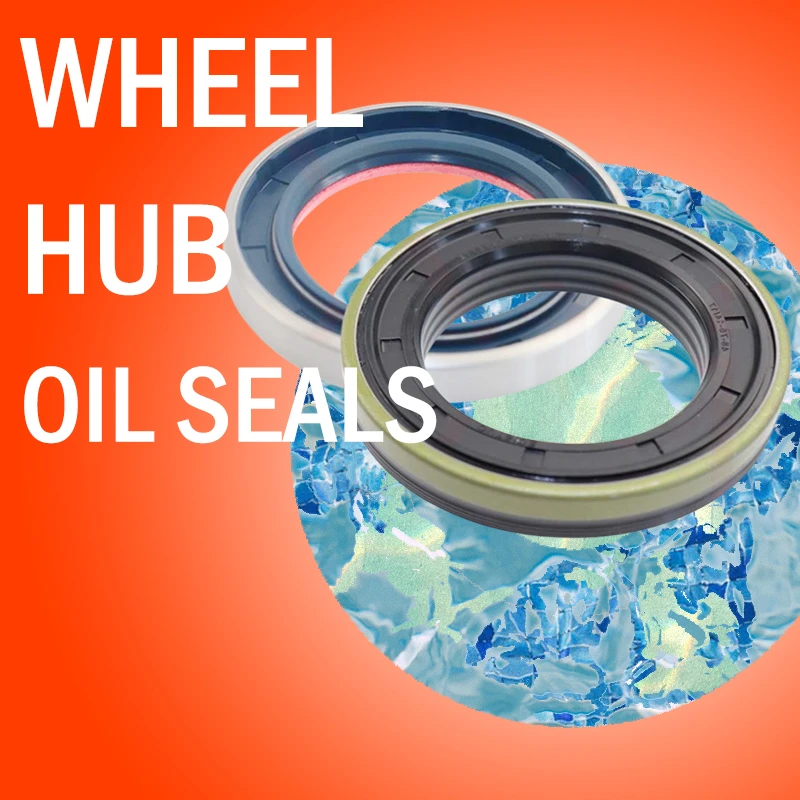නොවැ. . 13, 2024 16:07 Back to list
wheel hub oil seal
Understanding Wheel Hub Oil Seals Importance and Functionality
In the realm of automotive maintenance and engineering, wheel hub oil seals play a critical role in ensuring the smooth operation and longevity of a vehicle's wheel assemblies. These small yet mighty components are designed specifically to prevent the leakage of lubricating oil, thereby protecting the wheel bearings from contamination and the detrimental effects of external elements.
What is a Wheel Hub Oil Seal?
A wheel hub oil seal is a circular sealing element that fits into the hub of a wheel. Its primary function is to retain the lubricating oil within the wheel hub while simultaneously preventing dirt, water, and other contaminants from entering the bearing assembly. Typically made from durable materials such as rubber or silicone, these seals are engineered to withstand extreme temperatures and high-pressure conditions that are common in automotive applications.
Importance of Wheel Hub Oil Seals
1. Protection Against Contaminants The wheel hub area is exposed to harsh environments, including debris, water, and dirt from the road. A properly functioning oil seal acts as a barrier, preventing these contaminants from infiltrating the wheel bearings. This protection is crucial for maintaining the integrity of the bearings, as contaminants can cause wear and tear, leading to premature failure.
2. Retention of Lubrication Lubricating oil is essential for the smooth operation of wheel bearings. It reduces friction, minimizes heat buildup, and prolongs the life of the bearings. The oil seal ensures that this vital lubricant remains contained within the hub, preventing leaks that could compromise the bearing's performance.
3. Ensuring Safe Operation The failure of a wheel hub oil seal can lead to insufficient lubrication of wheel bearings, which may result in increased friction and heat. This can potentially create dangerous driving conditions due to bearing failure, leading to brake problems or wheel detachment. Regular inspection and maintenance of oil seals are, therefore, essential for safe vehicle operation.
wheel hub oil seal

4. Cost-Effectiveness Replacing a wheel hub oil seal is significantly less expensive than replacing damaged wheel bearings or other components that may be compromised due to seal failure. Regular maintenance and early detection of seal issues can save vehicle owners from costly repairs.
Signs of a Failing Wheel Hub Oil Seal
Recognizing the signs of a failing wheel hub oil seal is crucial for maintaining vehicle health. Some common indicators include
- Lubricant Leaks If you notice oil pooling on the ground where your vehicle is parked, it may indicate a leak from a damaged oil seal. - Increased Noise from Wheel Bearings A growling or grinding noise when the vehicle is in motion can signal bearing wear, possibly due to insufficient lubrication from a failing seal. - Vibration or Play in the Wheel Excessive movement or vibration in the wheel can also signify bearing issues linked to oil seal failure.
Maintenance and Replacement
To ensure the longevity of wheel hub oil seals, regular maintenance is crucial. Vehicle owners should include oil seal inspections during routine maintenance checks. If any signs of wear or damage are apparent, replacement should be carried out promptly. Replacing oil seals can be a straightforward process for a professional mechanic, typically involving the removal of the wheel hub assembly.
In conclusion, wheel hub oil seals are essential components that contribute to the reliability and performance of a vehicle. They protect critical elements from contaminants, retain lubrication, and ensure safe operation. By understanding their importance and recognizing the signs of potential failure, vehicle owners can take proactive steps to maintain their vehicles and avoid costly repairs in the long run. Regular inspections and maintenance will not only extend the life of the wheel bearings but also enhance the overall safety and efficiency of the vehicle.
-
The Trans-formative Journey of Wheel Hub Oil Seals
NewsJun.06,2025
-
Graphene-Enhanced Oil Seals: Revolutionizing High-Pressure Oil Sealing
NewsJun.06,2025
-
Future of Hydraulic Sealing: Advanced Intelligent TCN Oil Seals
NewsJun.06,2025
-
Don’t Let a Broken TCV Oil Seal Ruin Your Day
NewsJun.06,2025
-
Bio-Inspired Dust Seals for Better Sealing Performance
NewsJun.06,2025
-
Biodegradable and Sustainable Hydraulic Seal Materials
NewsJun.06,2025
-
Top Oil Seal Solutions for Your Industrial Needs
NewsMay.22,2025
Products categories
















